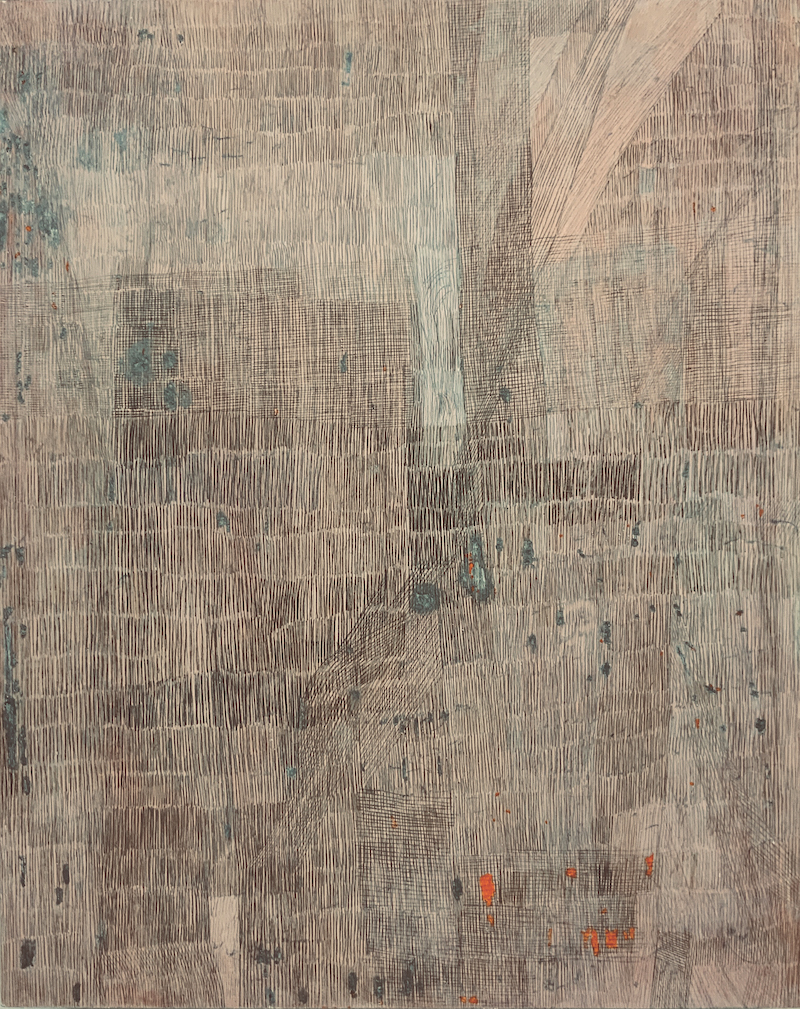“The notion of sustainable art practice is a conundrum”, states Lisa McKimmie. “There are few art materials that do not have a negative environmental footprint, or create waste. It is important to ask in what way art objects are vital to human society and our cultural histories and identities.”
For McKimmie, artmaking is a slow process; each piece is highly considered and its execution defined by deliberate mark-making. In an art world where high levels of production are considered vital to success, the artist looks to slow the torrent, and instead seeks to produce art objects as artefacts with which their audience has a long and involved relationship. Her choice of medium reflects this conception of art, using metal-point drawing, an approach that has a history stretching back before the use of graphite as a primary drawing medium. Alongside a more conventional stylus, the artist uses whatever metals she can get her hands on, from broken and scrap silver jewellery, roofing and builders waste, to old cutlery. This produces art that changes over time as, with the exception of gold, metals oxidise once applied, thus encouraging a lifetime of observation and appreciation. “I hope people will enjoy looking at my work and living with or revisiting it”, says McKimmie, “the idea of unique artwork as an object that is cared for and preserved in our culture is representative of the thought I think we need to bring to our relationship with all objects.”
McKimmie is presenting a solo exhibition at Flinders Street Gallery, Surry Hills on 13 May, opening at 4pm.

